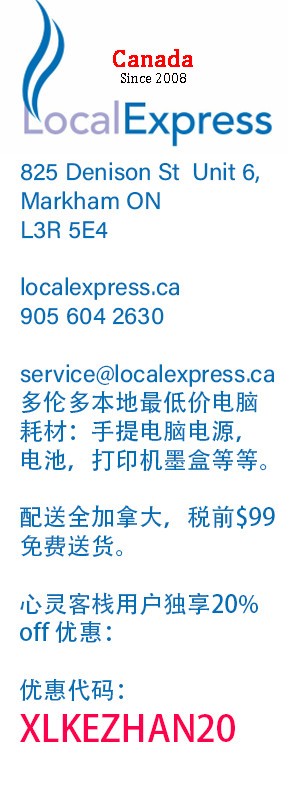ZT:Manage risk with covered calls and covered puts (谈股论金) 3823次阅读
观看【雅歌】的博客While some options strategies can be risky, covered calls and covered puts can help you potentially increase profits and limit losses.
It's a common misunderstanding that all options trading strategies are risky, complicated and suitable only for speculators. While this is true for some options strategies, many strategies — such as covered calls and covered puts — can be used to hedge and help minimize the risks of trading. In fact, when employed correctly, covered calls and covered puts can potentially increase profits and limit losses simultaneously. Let's find out how.
Covered calls: Long stock position and short calls in equal quantity
Covered calls, one of the most common and popular option strategies, can be a great way to generate income in a flat or mildly uptrending market. A covered call is when you own the underlying stock and then sell someone the right to buy the stock if the strike price is reached before expiration.
Covered calls also offer limited risk protection. The protection is confined to the amount of premium received, but this can sometimes be enough to offset modest price swings in the underlying equity.
A covered-call writer typically has a neutral to slightly bullish sentiment. In many cases, the best time to sell covered calls is either when establishing a long equity position (buy/write), or once the equity position has already begun to move in your favor.
When creating a covered-call position, it is generally best to sell options with a strike price equal to or greater than the price you paid for the equity. If you sell out-of-the-money calls and the stock remains flat, declines in value or even increases a little, the calls will likely expire worthless and you'll get to keep the premium you received when you sold them, with no further obligation. If you sell at-the-money calls, and the stock declines in value, the options will expire worthless with essentially the same result. Once that happens, you can do it all over again for another month.
If the stock appreciates in value to slightly above the strike price, you'll probably have your stock called away at the strike price, either prior to or at expiration. This is not a bad thing. If you sold at-the-money or out-of-the-money calls, the trade will generally be profitable, and the profit will usually exceed what you would have made by buying the stock and selling it at the appreciated price.
Here's a hypothetical example of a covered-call trade. Let's assume you:
Buy 1,000 shares of XYZ stock @ 72
Sell 10 XYZ Apr 75 calls @ 2
Because you bring in two points for the covered call, it provides two points of immediate downside protection. In other words, you will not have a loss unless the stock drops below $70.
But there's always a downside, and in this example the trade-off is that you limit the upside profit potential beyond a price of $77. So you would only want to do this if you think the price of XYZ will not exceed $77 by the April expiration. If XYZ does increase above $77, the stock purchase alone would have been more profitable.
Look at the profit and loss chart below. Notice that:
The breakeven price is $70.
The profit is capped at $5,000 for all prices above $75, i.e.:
$3 x 1,000[shares stock] + $2 x 10[options contracts] x 100[options multiplier]
The stock can drop two points before you go into the red. Losses will be incurred below $70 to zero.
Losses could be as much as $70,000 if the stock price drops to zero, but they will always be $2,000 less than the stock trade alone.
Note: Chart depicts strategy at expiration.
Covered puts: Short stock, short puts in equal quantity
Covered puts work essentially the same way as covered calls, except that the underlying equity position is a short instead of a long stock position, and the option sold is a put rather than a call.
A covered-put writer typically has a neutral to slightly bearish sentiment. Selling covered puts against a short equity position creates an obligation to buy the stock back at the strike price of the put option.
Just like with covered calls, the best time to sell covered puts can be either at the same time a short equity position is established (sell/write), or once the short equity position has already begun to move in your favor.
Here's a hypothetical example of a covered-put trade. Let's assume you:
Sell short 1000 shares of XYZ @ 72
Sell 10 XYZ Apr 70 puts @ 2
Take a look at the profit and loss chart below. Notice that:
The breakeven price is $74.
The profit is capped at $4,000 for all prices below 70, i.e.:
$2 x 1,000[shares stock] + $2 x 10[options contracts] x 100[options multiplier]
Even though there are two points of price protection against an increase in the stock price, losses will be incurred above $74.
Losses could be unlimited if the stock price continues to increase, but they will always be $2,000 less than the stock trade alone.
You would want to employ this strategy only if you think the price of XYZ will not fall below $70 by the April expiration. If XYZ does fall below $70, the short stock trade alone would be more profitable.
Note: Chart depicts strategy at expiration.
Be careful
While covered calls and covered puts limit risk somewhat, they cannot eliminate it entirely. With that in mind, here are a few cautionary points about these strategies:
Profits. Covered options usually prevent significant profit potential if a stock moves substantially in your favor. Anytime you sell a covered option, you have established a minimum buying price (covered put) or maximum selling price (covered call) for your stock. Any stock movement beyond that established price creates no additional profit for you.
Losses. Losses are limited only by the amount of premium you received on the initial sale of the option. In addition, it is rarely a good idea to sell a covered option if your stock position has already moved significantly against you. Doing so could cause you to establish a closing price that ensures a loss. So before you sell, ask yourself, "Would I be happy if I had to close out my stock position at the strike price on this option?" If you can answer "yes," you will probably be OK.
Holding until expiration. While our examples assume that you hold the covered position until expiration, you can usually close out a covered option at any time by buying it to close at the current market price. Regardless of whether the equity part of your strategy is profitable or not, waiting until expiration will maximize your return on an out-of-the-money option; however, you are not required to do so.
Assignment. A significant change in the price of the underlying stock prior to expiration could result in an early assignment, and if your short option is in-the-money, you could be assigned at any time. Covered calls written against dividend paying stocks are especially vulnerable to early assignment.
Corporate events. When companies merge, spin off, split, pay special dividends, etc., their options can become very complicated. The StreetSmart Edge® trading platform has detailed information regarding the terms of adjusted options; please review it carefully before you trade them.
完整帖子:
- 《炒股必读手册/新手指南》
![空帖子 / 没有文字 [ 没有文字 ]](themes/web_2.0/images/no_text.png) - 新东, 2017-05-02
- 新东, 2017-05-02 ![打开整个主题 [*]](themes/web_2.0/images/complete_thread.png)
- ZT:交易必读 | 如何控制交易中的账户风险 - 新东, 2017-05-02
- ZT:期货交易风险解读:期货交易风险有哪些? - 新东, 2017-05-02
- ZT:股市高手悟出的13条炒股铁律 - 新东, 2017-05-02
- zt:九种高危状态:不宜抢反弹! - 新东, 2017-05-02
- ZT:期权的基本知识 - 新东, 2017-05-02
- ZT:史上最全整理:杰西·利弗莫尔投资原则及启示 - 新东, 2017-05-02
- zt:《仓位和交易态度的微妙关系》 - 新东, 2017-05-02
- ZT:交易经验的无法替代性 - 新东, 2017-05-02
- ZT:看盘法 - 新东, 2017-05-02
- ZT:炒股技巧: 股市高手操作技巧8招 - 新东, 2017-05-02
- ZT:高手是怎么看均线的? - 新东, 2017-05-02
- ZT:看盘应注意哪些方面 - 新东, 2017-05-02
- ZT:如何正确使用黄金原油看盘与追单做单的技巧 - 新东, 2017-05-02
- ZT:技术面分析的优点及缺点 - 新东, 2017-05-02
- ZT:货币之王的回归:构建黄金分析研究框架的入门指南(从货币、市场、大类资产配置说起) - 新东, 2017-05-02
- ZT:如何构筑大宗商品深度研究架构 - 新东, 2017-05-02
- 周末愉快!推荐美股入门大全(经验教训篇)。有则改之,无则加勉。 https://xueqiu.com/4043855103/79599019 可点击贴子链接- ttjj - 新东, 2017-05-02
- 大家好!Happy Valentine's Day! 这里有2倍、3倍ETF 官方说明,列出了Top 10 Holding和Sector权重。蛮有意思的。http://www.direxioninvestments.com/etfs#!/-ttjj - 新东, 2017-05-02
- 这篇文章不错,链接贴这儿,抛砖引玉: http://guba.sina.cn/view_9111_1966508.html 投资交易最能赚钱的方法和技巧-ttjj - 新东, 2017-05-02
- 新浪美股图形实时工具:上方选5分,15分线,下方可选MACD,RSI, BOLL,可查看MA5, MA10, MA20, MA30。但不显示前盘后价格。 http://stock.finance.sina.com.cn/usstock/quotes/NUGT.html-ttjj - 新东, 2017-05-02
- ZT:投资新手必看手册 - 新东, 2017-05-02
- ZT:操盘技巧:做趋势还是做波段 - 新东, 2017-05-03
- ZT:股票基础入门知识:成交量怎么看 成交量分析 - 新东, 2017-05-03
- ZT:真正的交易功夫,不在乎对于行情的判断,乃在乎仓位管理的方法 - 新东, 2017-05-04
- ZT:投资高手进阶系列之——死磕交易系统(上) - 新东, 2017-05-04
- ZT:投资高手进阶系列之——死磕交易系统(下) - 新东, 2017-05-04
- zt:如何炒股票(心性篇)? - 新东, 2017-06-05
- 俺重要的帖链接: - 雅歌, 2017-05-16
- 如果在中国国内,可以用内附的链接上《谈股论金》或客栈。 - 雅歌, 2017-05-16
- 微信入群 - happycow, 2020-03-19
- XBI组成的96种股列表: - 雅歌, 2017-06-27
- ZT:六大均线系统的作用 - gzhuye, 2017-06-28
- The Flow of the Markets By Van K. Tharp, Ph.D. - 伍点墨, 2017-07-26
- The Loss Trap by Van K. Tharp Ph.D - 伍点墨, 2017-07-29
- Leverage EFTs Decay Dashboard - LR, 2018-01-11
- 周末好!借花献佛,祝交易顺利,不断提高!分享: Chat with Traders 采访系列。 Index Investing 详解 - Free eBook Download。亚马逊也刚刚推出此书,见以下链接。 - ttjj, 2018-01-21
- 国外经典股市投资、投机书籍,中文PDF分享,外加英文原著链接: - ttjj, 2018-01-21
- ETF 投资信息 - ttjj, 2018-01-21
- 周末好!推荐免费视频培训, 简洁易懂, 链接见内。
Kids Webinar, Trading For Beginners, Intermediate Trading, Trading Mastered, Day Trading and Futures Trading Program.
Real Life Trading 网站的创办人,今天连续7小时网上授课,all the proceeds go to a charity helping homeless people. - ttjj, 2018-04-14
- 2020 最新链接,重新录制的免费网课。先注册 https://www.reallifetrading.com/beginner-trading-course 然后在dashboard 选初级,中级,高级课程,都是免费的。周末愉快!
![空帖子 / 没有文字 [ 没有文字 ]](themes/web_2.0/images/no_text.png) - ttjj, 2020-03-28
- ttjj, 2020-03-28
- 网站新的dashboard - ttjj, 2020-03-28
- 2020 最新链接,重新录制的免费网课。先注册 https://www.reallifetrading.com/beginner-trading-course 然后在dashboard 选初级,中级,高级课程,都是免费的。周末愉快!
- 很多炒股牛人说炒股多年,试过了各种指标和方法,突然有一天悟了,从此开始稳定盈利。他们到底悟到什么了呢?
https://www.zhihu.com/question/30793521/answer/295872063 - longterminvestor, 2018-07-21
- 多谢!原文链接和图表在此。https://www.zhihu.com/question/30793521 - ttjj, 2018-12-06
- SOX ( Philadelphia Semiconductor Index ) 包含的股票。 - 雅歌, 2018-07-26
- 周末献宝:众里寻他千百度 - ttjj, 2018-08-11
- 亚历山大·埃尔德博士和《以交易为生》 - ttjj, 2018-08-30
- A Textbook Example Of A Dividend Machine - REITs - ttjj, 2018-10-10
- ZT:Manage risk with covered calls and covered puts - 雅歌, 2018-10-31
- Are you guilty of these 4 bad trading behaviors? - 雅歌, 2019-01-11











